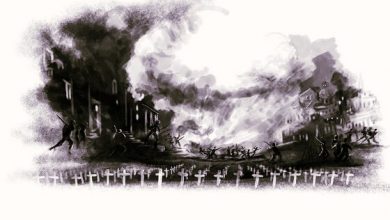“Coming of Age in the Dawnland” by acclaimed science journalist Charles C. Mann is a meticulously researched historical narrative that offers readers a glimpse into the lives, cultures, and challenges faced by the Native Americans of the Dawnland, a region now known as eastern Massachusetts and Rhode Island. He predominantly writes about the existence and culture of the inhabitants before the arrival of Europeans. The historical text thus invites readers on a thought-provoking journey, challenging preconceptions, and emphasizing the enduring importance of acknowledging the diverse and multifaceted histories.
Coming of Age in the Dawnland | Summary
The text introduces “the friendly Indian”as depicted in historical texts, Tisquantum. This word often represented rage in the northeastern part, especially the spiritual power called manitou. The writer further illustrates a meeting of Tisquantum with the pilgrims, also mentioning the unconventional nature of such a name that would neither be adopted in contemporary Western society nor in seventeenth-century indigenous culture, hinting at a possible purpose behind the name.
The author then challenges the common label of Indian applied to Tisquantum and his people. He points out that Tisquantum and his contemporaries would not have recognized themselves as such, as they identified primarily with their specific tribes and communities. Tisquantum considered himself a citizen of Patuxet, a shoreline settlement within the larger Wampanoag confederation. The author emphasizes the importance of understanding these distinctions to grasp the complex social structures of indigenous societies.The author further describes Patuxet situated in the picturesque landscape of Cape Cod Bay. The place is depicted as abundant in nature, from the maize fields to the plentiful fish and fowl. The historical narrative shifts focus to the significance of the herring-like alewives in the local diet and how they played a central role in the community’s sustenance.
The author provides an intimate glimpse into Tisquantum’s early life, describing the construction of his home or “wetu.” These dwellings were ingeniously designed with arched poles and insulating layers of mats, offering superior protection from the elements. The narrative depicts the coziness of the wetu’s interior, with low beds, communal sleeping arrangements, and the comforting glow of firelight.
The text also delves into the unique aspects of Dawnland education, illustrating the emphasis on character development. It contrasts the Native American approach to childhood, characterized by playful development and close family ties, with the more utilitarian European view. The author now starts highlighting how these formative years prepared young individuals to become resilient, honest, and uncomplaining adults. Governance and property rights within Patuxet and neighboring settlements are explored, with the sachem serving as a central figure responsible for upholding the law and resolving disputes. The interplay of power dynamics and diplomacy among these indigenous communities is described, emphasizing the need for sachems to maintain the consent and support of their people.
The author also sheds light on the frequent but relatively mild armed conflicts within indigenous societies, contrasting them with the more brutal European warfare of the time. These skirmishes described by the text were often driven by the desire for retribution or status rather than territorial conquest. The text also notes the rarity of women and children being killed and the practice of capturing men for potential torture or assimilation into the victorious group.
Coming of Age in the Dawnland | Analysis
The narrative structure of this text is primarily chronological, tracing the life and culture of Tisquantum and his community before the interaction with Europeans. The historical text’s primary focus is on the customs, rituals, and daily life of the indigenous people. The tone is informative and historical, aiming to provide a detailed and factual understanding of the native way of life, while also shedding light on the complexities and tensions of the time. The style is characterized as one of academic rigor and narrative storytelling blending these techniques to build an interesting and credible narrative. The author’s intent appears to be multifold, while he hopes to humanize and contextualize Tisquantum and his people by offering a counter-narrative to traditional historical accounts, the text also emphasizes the profound impact of European arrival on indigenous cultures.
Mann begins by exploring the identity and naming conventions of Tisquantum, suggesting that the name itself carries spiritual significance. By highlighting Tisquantum’s choice to present himself as the “Wrath of God” to the Pilgrims, Mann prompts readers to consider the intentional projection of identity in the face of European contact. The narrative also critiques the labeling of Tisquantum and his people as Indians, the author does so by also mentioning the distinction between social structures that exist within indigenous societies. He asserts that the label “Indian” was a construct that did not align with how indigenous people viewed themselves, inviting readers to question historical terminology and its impact on our understanding of these cultures.
The text provides rich descriptions of the geographical and environmental features of Patuxet, underlining the importance of the natural world to indigenous societies. The portrayal of Patuxet’s landscape, agriculture, and abundant fish resources serves to also illustrate the symbiotic relationship between indigenous communities and their environment. He also effectively challenges the conventional notions about the backwardness of such communities by providing an analysis that draws attention to the practicality and thermal efficiency of these structures, offering readers a fresh perspective on indigenous engineering and architecture. Mann highlights the contrast between Wampanoag child-rearing practices and English norms, prompting readers to reflect on diverse cultural approaches to raising children and molding character.
Mann’s depiction of Native American childhood is a central theme in his narrative. He employs emotive language, phrases like “Beat them, whip them, pinch them, punch them” are not only emotionally charged but also utilize parallelism to emphasize the relentless nature of the molding process, and to also challenge any romanticized notions of indigenous childhood. However, it is crucial to recognize that the text is presenting this information to shed light on the different cultural approaches to child-rearing and character development. While the methods may appear harsh to Western readers, they were integral to the formation of indigenous character traits like bravery, hardiness, and self-discipline, encouraging readers to question their own cultural biases and assumptions about culturally different practices.
The historical text also contrasts the Native Americans’ environment with that of the arriving colonists. Critically distinguishing between the serene and harmonious landscape of Dawnland, often depicted as a place with constant fire and soothing lullabies acting as symbols of care and warmth within the community, creating a positive picture. In contrast, the author also mentions the colonists’ reactions to this warm environment, highlighting their initial surprise and discomfort. The use of the word “sighed” when referring to the colonist William Wood’s comment on the indigenous houses suggests a sense of disappointment or realization that challenges their preconceived notions. This irony serves to challenge the superiority complex that some colonists might have had.
Mann sets the stage for the collision of cultures by illustrating the contrasting worldviews of the Native Americans and the colonists. He alludes to the inevitable clash of beliefs, values, and practices as the two groups encounter each other. The historical focus furthers to navigate through the intricate political landscape of indigenous societies, with sachems governing and diplomacy playing a crucial role. He illustrates the complexities of intertribal relations, emphasizing the constant tensions arising from competition for resources and territorial boundaries. This analysis challenges the notion of indigenous societies as solely communal, highlighting their sophisticated political structures. The text also offers a nuanced portrayal of indigenous conflicts, debunking stereotypes of savage warfare. Mann characterizes these conflicts as brief and driven by status and retribution rather than conquest. His account underscores the strategic and ethical aspects of indigenous warfare, prompting to reconsider historical misconceptions.
Coming of Age in the Dawnland | Title
“Coming of Age” implies a transition from youth to adulthood, highlighting the profound changes, challenges, and lessons experienced by the Native Americans as they navigated a shifting landscape both in terms of their own culture and the external influences. “Dawnland” symbolizes not only the geographical location but also the metaphorical dawn of a new era, signifying the profound impact of colonial encounters on their way of life. The title thus foreshadows a narrative that explores the maturation of a people within the context of a changing world, marked by both cultural continuity and adaptation in the face of external forces.
Coming of Age in the Dawnland | Literary Devices
The writer utilizes vivid imagery throughout the narrative to paint a detailed picture of the Native American way of life and their environment. He describes the Native American houses, or wetus, with imagery that allows readers to visualize the structures, such as “arched poles lashed together into a dome” and “thin sheets of chestnut bark.” This imagery helps readers immerse themselves in the setting.
The text uses metaphorical language to convey complex ideas and comparisons. The mention of Tisquantum adopting the name “Wrath of God,” serves as a metaphor for the potential misunderstanding and clash of cultures between Native Americans and European colonists. The metaphor highlights the cultural divide and the potential unintended consequences of such encounters.
Irony is employed when the text discusses the colonists’ reactions to the Native American environment. The statement that the colonists found the indigenous houses “warmer than our English houses” is ironic because it contradicts the colonists’ expectations. This irony serves to challenge stereotypes and assumptions held by the colonists and modern readers alike.
Throughout the text, various symbols are employed to represent deeper concepts. The constant fire in the wetu, symbolizes the warmth and care within the indigenous community. It represents not just physical warmth but also the emotional warmth and unity among the people. The author also alludes to historical events and cultural practices to provide context and depth to the narrative. He alludes to the indigenous practice of sending boys into the woods alone as they come of age, which draws parallels to similar rites of passage in other cultures. The text hints at the impending clash of cultures and the transformations that will occur when European colonists arrive in the Dawnland. This foreshadowing creates anticipation and prepares readers for the broader historical context of the writing.
The narrative transcends mere historical documentation; it serves as a compelling testament to the resilience, complexity, and rich traditions of indigenous societies. Through vivid storytelling and evocative language, the writer not only sheds light on the contrasting worldviews of Native Americans and colonists but also underscores the enduring significance of understanding the cultural and environmental legacies that continue to shape our modern world.



